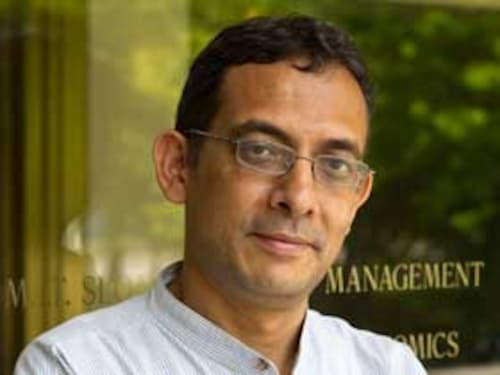Breaking Down the Poverty Problem
Tackle the small issues, says economist Abhijit Banerjee, and that will answer the bigger questions


In the film A Beautiful Mind, Nobel-winning economist John Nash, played by Russel Crowe, tells his colleagues: “Exactly how are we supposed to keep the world safe for democracy if we’re stewing to death?” The irony-laced reference is to a non-functioning air conditioner. But it also hints at how economists look at themselves: They work on big problems, and ask big questions — How to increase the national income, the optimum trade policy and so on.
In a survey by The Economist to see who economists thought were the most influential in the past decade, the list was full of big-questioners: Ben Bernanke, John Maynard Keynes, Jeffrey Sachs, Paul Krugman, etc.
In development economics, the biggest question is: How to eradicate poverty? The most influential economist here is Jeffrey Sachs, a professor at Columbia University, who argues that aid could lift people out of poverty.
To find Sachs’ anti-thesis, you have to travel from Columbia to MIT. If Sachs is an impassioned activist, Abhijit Banerjee, an MIT professor, is ironic, thoughtful and deliberate, ready to cast a cold eye on social issues such as health, education and poverty. The big questions are important, but they have no definite answers. So, it is better to find answers for small questions.
Born in Calcutta to economics professors, Banerjee studied at Presidency College before doing his M.A. at Jawaharlal Nehru University and Ph.D. at Harvard. He taught at Princeton and Harvard, before moving to MIT, where he met Esther Duflo and Sendhil Mullainathan. They looked at economics using a new tool — Randomised Control Trials (RCT) — and in 2003, founded Poverty Action Lab to evaluate development programmes and help design better policies.
RCT was mostly used earlier in medicine to test the efficacy of treatments, until Banerjee and his colleagues used it in development programmes to test the impact of interventions. Banerjee and Duflo have just published a book, called Poor Economics – Rethinking Poverty and the Ways to End It.
The book not only takes on Sachs, but also William Easterly, Sachs’ ideological opponent who has argued that Sachs’ solution does more harm than good. Easterly’s answer: Free the markets, give the right incentives and people will find a way to solve the problem. Sachs and Easterly have compelling arguments, but not the kind of data that would convince Banerjee and Duflo.
Banerjee and Duflo want us to understand that there is no silver bullet to alleviating poverty. In fact, most policies fail since they hope to solve all aspects of poverty, at once.
Instead, they are looking for evidence of what works and what doesn’t: What is the best way to make people use mosquito nets to prevent malaria? Will training help move the poor out of constant debt cycles?
The answers are not easy to find. Consider food. Most people associate poverty with lack of food and a vicious cycle that traps the poor: When they don’t work, they don’t have food, and when they don’t have food, they can’t work. This suggests that the poor spend every extra penny on the cheapest calories available. But data shows that people tend to consume tastier, more expensive food at the first chance.
Policy prescriptions are often based on ideological leanings. Should mosquito nets be given away or sold? You could argue that people won’t value free stuff, and won’t use them (a typical right of centre argument). You could also argue that they should be given away, given the impact on public health (a typical left of centre argument).Instead of getting swayed by ideology, Randomistas (as their group is known) look at data they look at it in various permutations and combinations, over a period of time, at various places and get a pretty good idea of what works.
The approach is not without its critics. One relates to the danger of generalising the results (what social researchers call ‘external validity’ it questions whether what worked in one place will work in another). In an earlier interview, Banerjee said it was a serious concern. But some evidence is better than no evidence. Also, many such trials will lead to better policies.
It is not clear if RCT will provide answers to all problems. India has tried various approaches of poverty alleviation — giving away food grains, guaranteeing minimum employment, — with varying results. The reason: Different people implemented them. To Banerjee, this is a result of bad design. A well-designed programme would be independent of the intentions of the implementing officials, he says, over phone from Cambridge.
Some would yet say that Banerjee is still looking for a silver bullet, albeit at a micro level. But there is little doubt that RCT offers a chance to replace assumptions with hard data. Development policies are often driven by what Banerjee calls the three ‘I’s — ideology, ignorance and inertia.
His research and his book, is “just an invitation to look more closely” and understand how the poor make their decisions.
First Published: Jul 13, 2011, 06:04
Subscribe Now